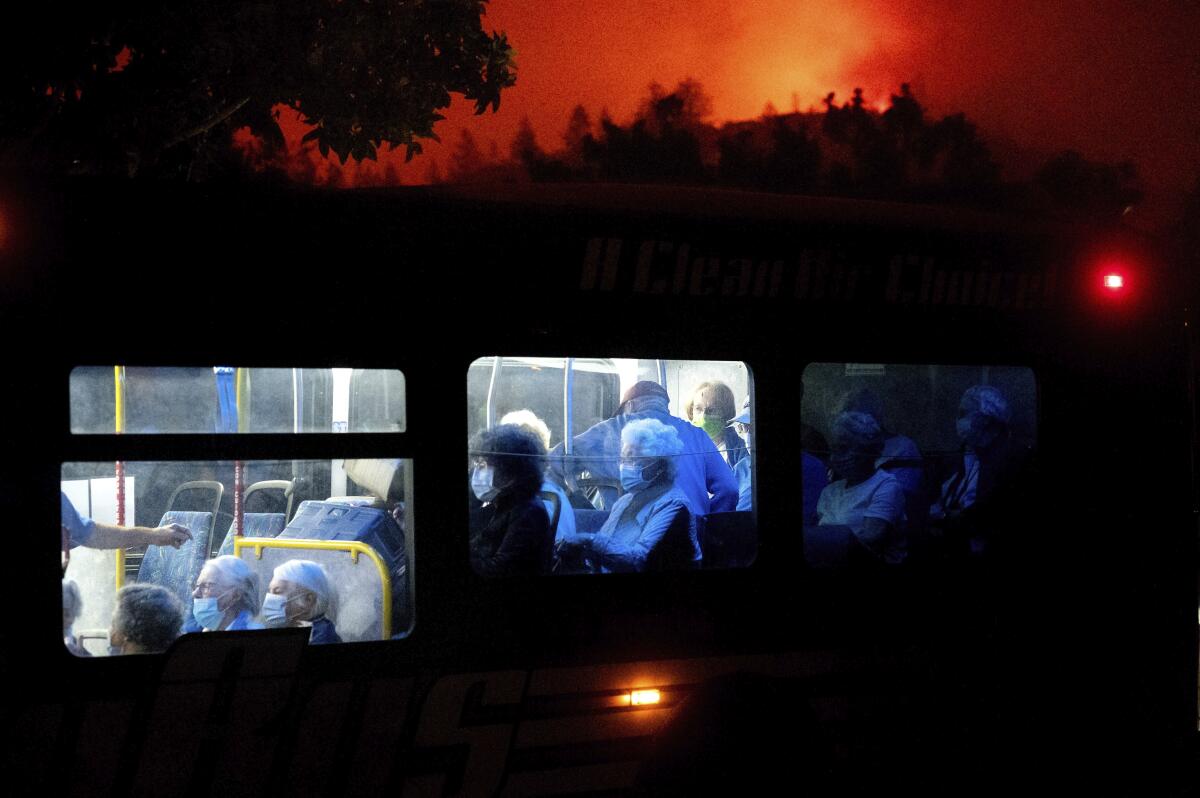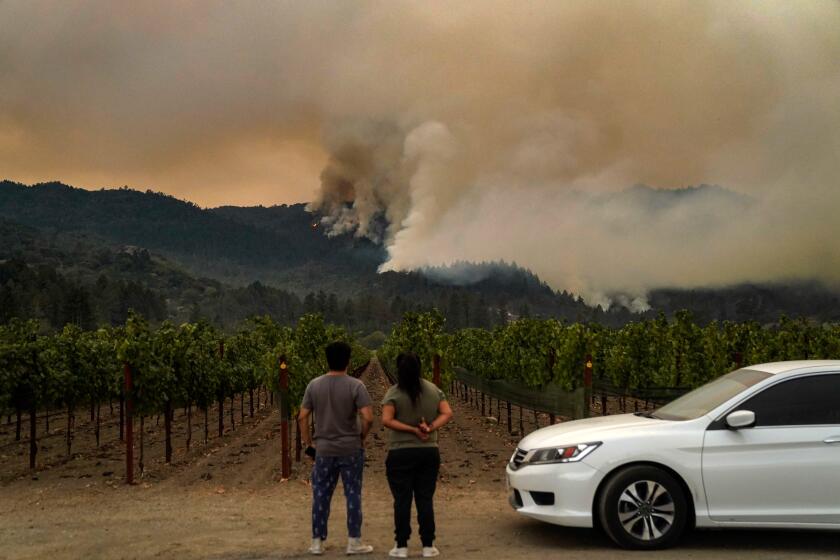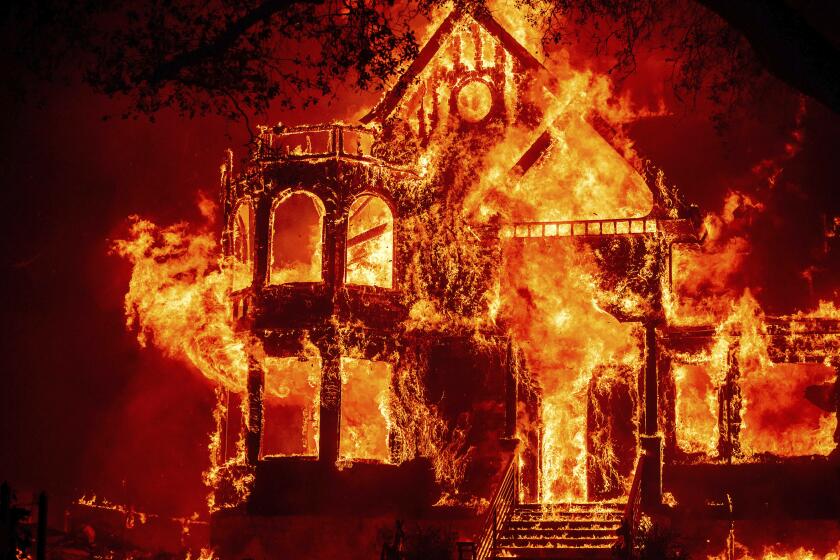After dozens died in 2017, Santa Rosa residents were prepared when flames returned this week

SANTA ROSA — Like almost everyone else in the Coffey Park neighborhood, Maria del Carmen lost her home three years ago.
“I still get panic attacks,” the 33-year-old Santa Rosa resident said Monday. Terror shoots through her when she smells smoke, “until I can figure out there’s no fire here. Then I can relax.”
She learned of the 2017 Tubbs fire when she woke in the night and looked out her window, so it was without question that when she rebuilt, Del Carmen signed up for emergency Nixle alerts on her cellphone. She stayed most of Sunday night, packing and monitoring fire news.
The midnight urban evacuation that Sonoma County officials feared would be a repeat of 2017’s exodus instead went relatively smoothly, Del Carmen said, “because of all the Nixles. Everyone gets them.”
She, however, left even without an evacuation warning for her home — leaving before dawn and heading early into work to a retirement center whose residents were being moved to a community shelter in nearby Petaluma.
Once again, wind-driven flames tear through Santa Rosa, as wildfires besiege California’s wine country.
The fire that burned into Santa Rosa on Sunday and Monday was reminiscent of the 2017 firestorms that destroyed thousands of homes and killed dozens of people. But this fire has been far less destructive, and there have been no reports of fatalities.
And there are clear signs that officials and residents learned from 2017, with warnings to get out being issued — and followed — more effectively. On Sunday night and Monday morning, thousands fled to safety, jamming Highway 12.
A lot has changed in three years, Del Carmen said.
“It [the evacuation] was better, even though the fire did come faster.”
Sitting on the sidewalk outside the Petaluma shelter, Rose, a 32-year-old Santa Rosa resident who did not want to give her last name, similarly relied on the text alerts. “A friend said, ‘You have to subscribe to Nixle,’ ” she said.
When a loud emergency alert also blasted on her phone, Rose made the decision to leave, though it was an hour before she could find a way out of town. She doesn’t drive. “I really relied on a complete stranger,” she said.
California’s wine county is once again facing threats from wildfires.
Most of Santa Rosa remained open for business Monday, with ash flakes drifting out of the overhead smoke, cars driving with their lights on and major stores running air-filtration machines full blast at their entrances.
Santa Rosa Mayor Tom Schwedhelm credited seasoned residents and emergency planners for an unpanicked evacuation. The main road on the fire-side of town became gridlocked midway through the night, but in less than two hours, traffic flowed again.
Police Chief Rainer Navarro called out the entire department at the very start. Navarro said he had more than 130 officers using pre-planned evacuation routes and directing traffic, while others picked up garden hoses to help quench spot fires until outside fire agencies could arrive.
Public warnings and orders to leave began within half an hour of the realization that embers from the Glass fire had kicked off a new blaze headed over Mt. Hood toward Santa Rosa.
The action plan differed greatly from that of the Tubbs Fire, when Sonoma County officials delayed warnings out of fear that a mass evacuation would cause panic and block the narrow roads that firefighters needed to access.
“This isn’t our first rodeo experiencing this, and I think everyone now understands we have to work together to do this safely and effectively,” Schwedhelm said.
More to Read
Sign up for Essential California
The most important California stories and recommendations in your inbox every morning.
You may occasionally receive promotional content from the Los Angeles Times.













